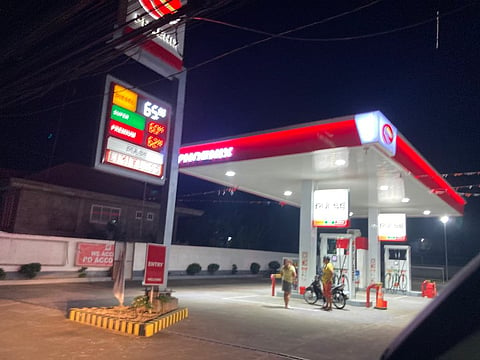Diesel more expensive than gasoline in the Philippines now: Here’s why
Several factors cause diesel prices to spike higher than petrol in the Asian country

Manila: Filipinos are now paying more for diesel than for gasoline – on the back of high global demand for the fuel for trucks and commercial vehicles.
This would have an expected knock-on effect on businesses reliant on hauling and goods transport, potentially pushing inflation up.
Why is diesel more expensive than gasoline in the Philippines in 2025?
A number of factors are at work, say officials.
A strong local and regional demand, tightness in global diesel supply, heightened impact from geopolitical factors – and, to a limited extent, the rise of electric vehicles or hybrids – are all contributing to the situation.
No fuel subsidy
The Philippines’ government does not subsidise or control diesel prices differently than gasoline, meaning global trends are felt directly in local retail pricing.
Local media quoted fuel retailer Jetti Petroleum president Leo Bellas as saying on Friday that diesel prices are forecast to rise between Php0.40 and Php0.60/litre this week, while gasoline prices are projected to go down between Php0.10 and Php0.30 per liter, citing data from the benchmark Mean of Platts Singapore (MOPS) and foreign exchange performance.
Tighter regional diesel supply, high global demand
In 2025, diesel prices surged due to tighter global and regional supply. Several issues contributed:
Diesel supply in Asia has been squeezed by disruptions in refineries, decreased exports from major producers, and increased demand for shipping, industry, and transportation.
Tighter inventories in Southeast Asia and increasing demand — especially from logistics and power generation sectors — put upward pressure on diesel prices in the Philippines, as per PNA.
Global events, such as Houthi attacks in the Red Sea (a key fuel trade route) and continued sanctions or disruptions affecting Russian diesel exports, have limited worldwide availability and pushed prices higher.
Geopolitical events
Geopolitical uncertainty — such as Middle East conflicts or sanctions — has tended to hit diesel harder than gasoline, because diesel is the main fuel for trucking, industry, and shipping, and is more closely tied to global supply disruptions.
For instance, when refinery output or crude flows are restricted (whether in Russia, the Middle East, or the US), the diesel supply chain tightens more than that for gasoline.
Unexpected spikes or declines in US and global inventories, especially for distillates (diesel), create price shocks felt directly at the pump in the Philippines.
Seasonal, local demand differences
Diesel demand tends to be less elastic than gasoline because it powers not only public transport but also commercial vehicles and essential services.
In times of economic growth or recovery, diesel consumption rebounds faster.
Changing consumption patterns
Meanwhile, gasoline can face periods of softer demand, especially as private vehicle use declines or if hybrid/electric adoption increases.
During such times, gasoline may be in relative oversupply, softening its price versus diesel.
In general higher diesel costs affect transport, agriculture, and logistics — pressuring inflation in goods and services reliant on road transport.
Hybrid and EVs: A rising a factor?
As of 2025, hybrid and battery electric vehicles together account for just over 4% of total new vehicle sales, with projected purchases of about 20,000 units this year out of around 500,000 total vehicle sales.
While interest and adoption are growing rapidly (particularly in hybrids, which can run on both fuel and electricity), the Asian country’s overall vehicle fleet remains overwhelmingly dominated by conventional gasoline and diesel-powered engines.
Sign up for the Daily Briefing
Get the latest news and updates straight to your inbox








